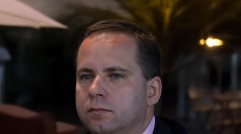Telefónica IT Costs Reduced 15 Percent, 80 Percent Infrastructure to Run on Microsoft's Windows Cloud Services
With services for more than 315 million customers across the United States (U.S.), Europe, and Latin America, the global broadband and telecommunications provider Telefónica wanted to reduce server costs, and Microsoft offered its private cloud brand.
In a case study published in 2013, Telefónica was hit by the 2007 global economic recession despite its rapid growth and healthy margins in the mobile market in the early 2000s. Telefónica, which employs 260,000 people and revenues of approximately $80.8 billion in 2011, cost control became an important issue with the company after expanding its global cellular infrastructure.
"The majority of our services and systems were over-specified to provide adequate performance for peak loads," said Telefónica's Head of Global Infrastructure Adrian Steel. "There was little use of virtualization and few Intel architecture-based servers. We had many UNIX operating system-based systems, Oracle databases, and proprietary hardware architectures. Also, because our business is highly decentralized, spanning more than 100 companies around the world, we had a huge amount of duplication."
Telefónica was responsible for "tens of thousands" of servers that were spread across dozens of data centers worldwide, but the telecommunications provider wanted to do more than virtualize servers. While trying to reduce operating costs, Telefónica wanted to speed up its data center velocity and delivery of server resources to businesses.
In 2011, Telefónica's chief information officer wanted the company to change its ways and stop buying servers. He also sought to consolidate Telefónica's global server surplus.
The company decided to build a 15,000-meter Tier 4 data center in Madrid, Spain and move its 27 European data centers, which included about 18,000 physical servers, into the Spanish center.
"A Tier IV data center (as defined by the UPTIME Institute) provides 99.995 percent uptime by making extensive use of redundant components and a fault-tolerant infrastructure," noted the Microsoft case study.
Next, Telefónica wanted to virtualize as many of the 18,000 servers as possible. This is where Microsoft stepped in. Telefónica utilized the Windows Server 2012 operating system's Hyper-V technology.
"Hyper-V technology in Windows Server 2012 is every bit as capable as VMware and for Telefónica more cost-effective," added Steel.
Telefónica's data that were Windows-based was configured into a private cloud. The company partnered with the Microsoft Services Enterprise Strategy and Microsoft Services Consulting to design and build the private cloud.
The case study noted, "Microsoft and Telefónica used Microsoft System Center 2012 to create virtual machines, perform physical-to-virtual (P2V) and virtual-to-virtual (V2V) workload migrations, monitor the servers and workloads, and optimize performance."
By mid-2013, Telefónica's private cloud is still considered in its "infancy" stages but is projected to contain approximately 10,000 virtual machines. An additional forecast, Telefónica plans to consolidate the 18,000 physical servers to 6,000.
Telefónica doesn't plan on having only a private cloud but is set to make use of public cloud services such as Windows Azure. By 2016, the broadband and telecommunications provider expects 80 percent of its infrastructure to run in either the private or public cloud services.
"Telefónica sees cloud computing as enabling greater agility," Steel said. "A hybrid-cloud approach enables us to deliver faster response to new service requests; we're no longer dependent on server acquisition and provisioning processes and costs."
"By using a Microsoft hybrid-cloud strategy, we're going to reduce our physical server footprint by 66 percent," added the Head of Telefónica's Global Infrastructure. "The power and manageability savings of such a reduction is huge. By reducing our IT spend by 15 percent through the use of Microsoft cloud software and services, we free up money to spend on creating new innovative services to make the business more competitive."
__
For the latest updates, follow Latin Post's Michael Oleaga on Twitter: @EditorMikeO
Subscribe to Latin Post!
Sign up for our free newsletter for the Latest coverage!











